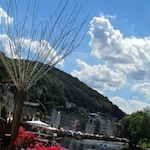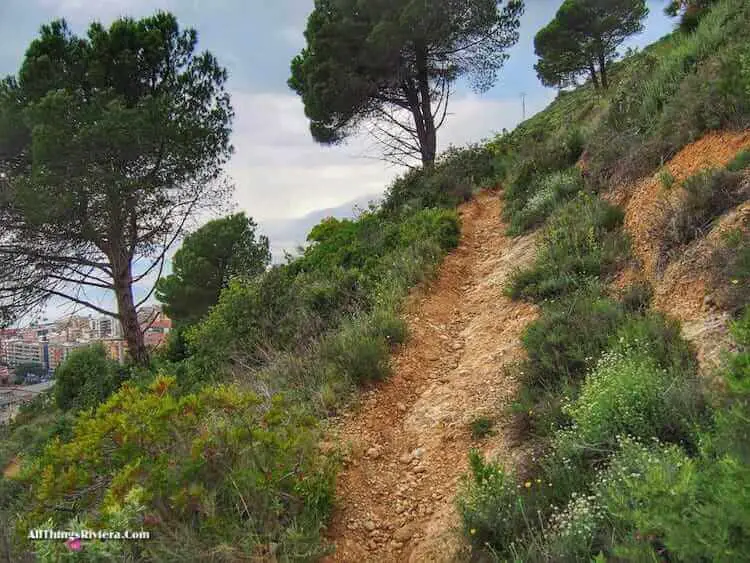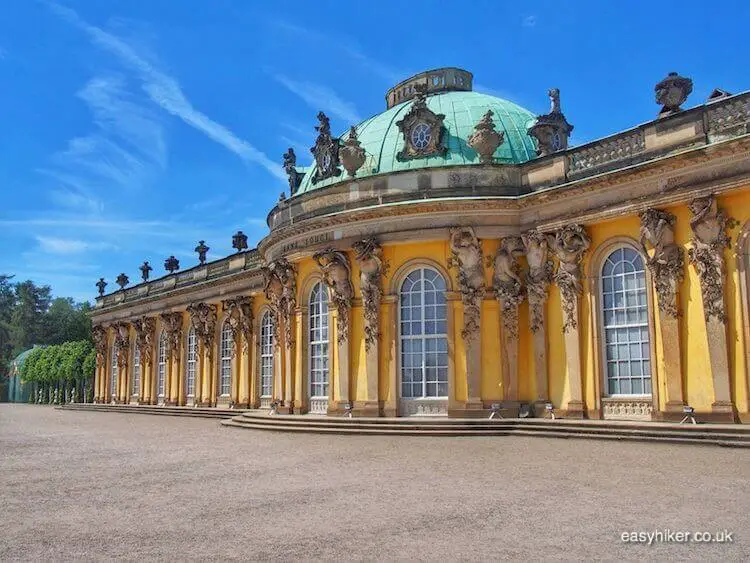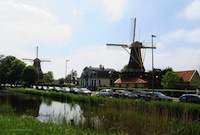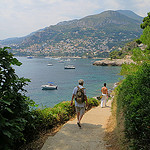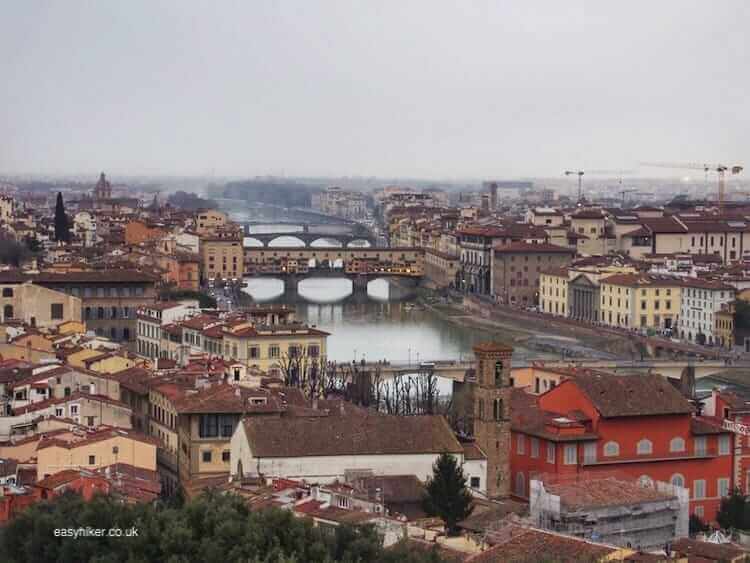
For a country with one of the longest coastlines in Europe, Italy – it has always seemed to me – has a surprisingly large number of large landlocked cities: Milan, Turin, Florence. Even Rome, strictly speaking, has no sea harbour (Ostia is more than 30 km away).
What is the common secret of these places? How did they become great and prosperous in antiquity and the Middle Ages without access to the lucrative routes of the Mediterranean sea trade?
This “common secret”, of course, is that these cities were not really landlocked at all but connected to the Mediterranean through a network of canals and navigable rivers which, in an age virtually without roads and passable bridges (once you had left the fortified towns), were of tremendous significance.
Which is why, on our recent trip to Florence, we thought that a walk down the Arno would serve as a perfect introduction to the city.
It may be possible, after all, to gain an understanding of Florentine history and the way the city “ticks” without seeing a single Renaissance work of art or even without knowing who Michelangelo and the Medici were. But without the river?
A walk to know Florence and the Arno better
It turned out that our walk along the Arno was indeed an interesting and worthwhile experience – although perhaps not quite in the way we had anticipated.
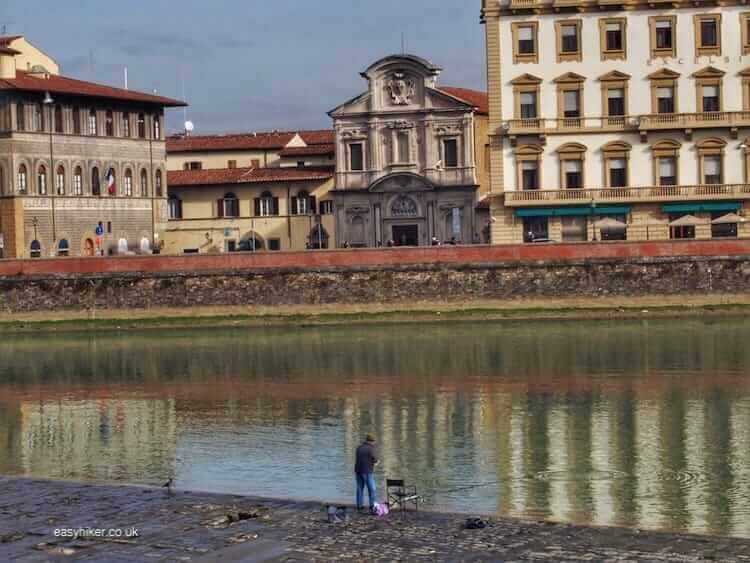
Start the walk, to get to know Florence and the Arnoby better, by crossing the Amerigo Vespucci bridge just south of Florence’s Santa Maria Novella train station. Turn left to pass the old town which lies on the other side of the Arno.
This will give you a good opportunity of familiarizing yourself with the skyline.
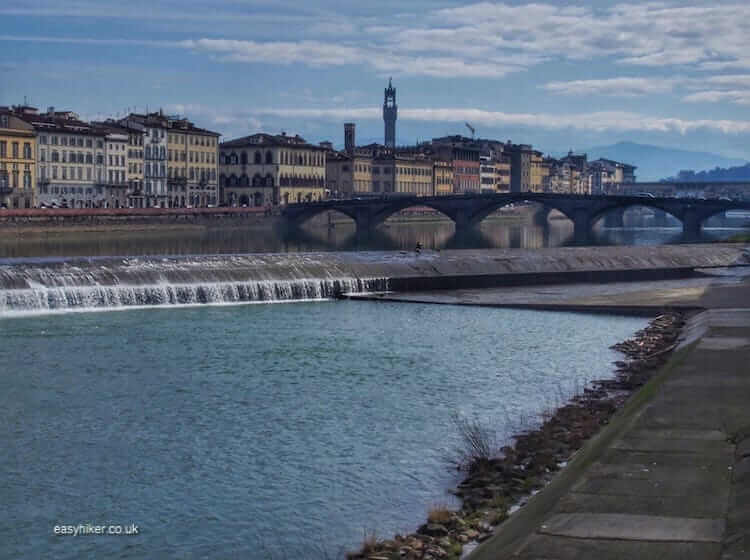
There is no footpath along the Arno on the southern side, so you must cross over to the right bank via Ponte Santa Trinità, said to have been originally designed by Michelangelo, …
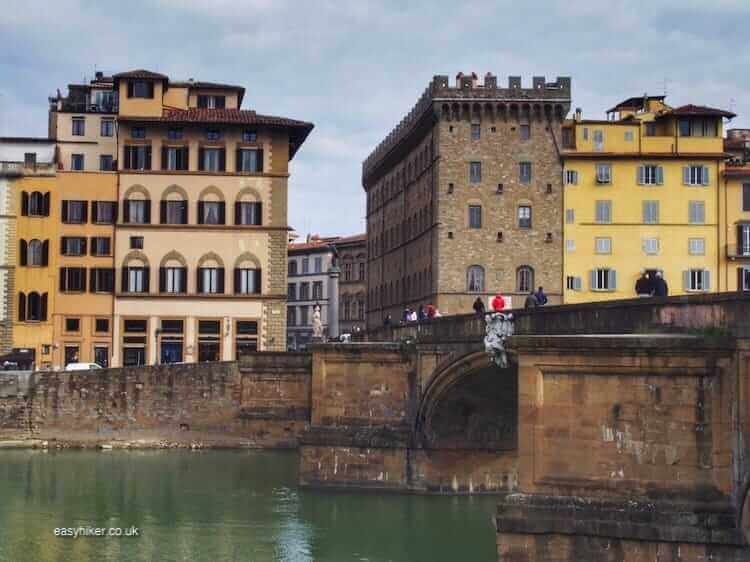
… after which you can take a short detour to take a closer look at some of Florence’s major tourist attractions – they are only a few steps away.
Turn right from Via de Tornabuoni – through the densest array of luxury shops you can find anywhere in Italy (anywhere on the planet?) – for the Palazzo Vecchio (City Hall) on Piazza della Signoria, the ancient heart of the civic city.
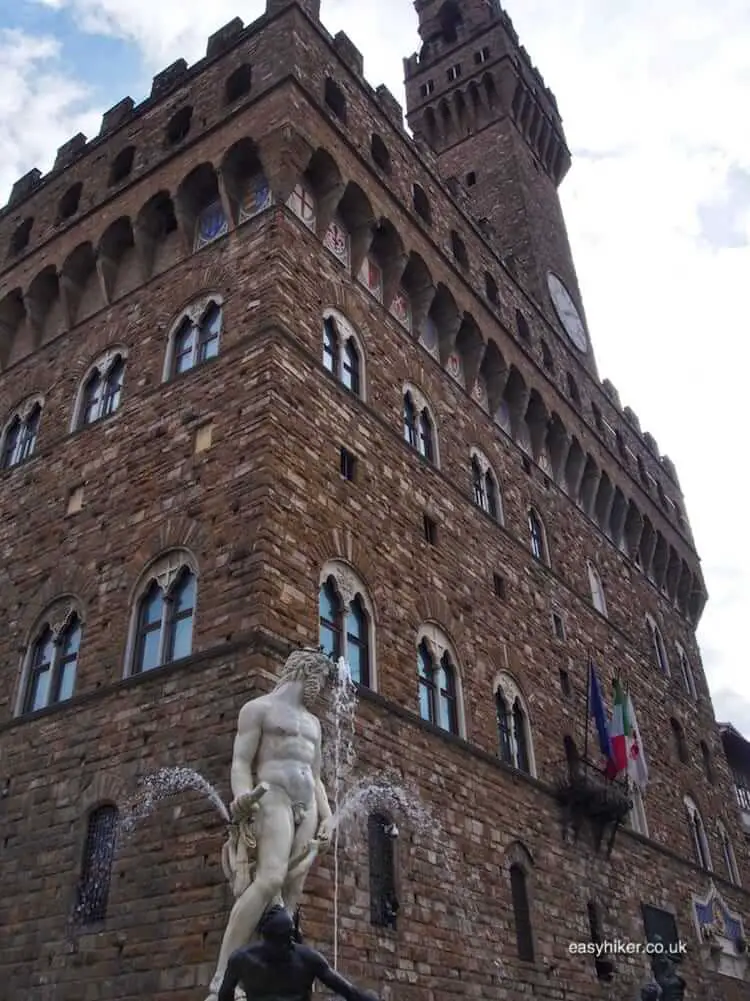
Return from here to the river at the point of the Ponte Vecchio, the former hub of popular Florence where butchers and bakers used to ply their trade …
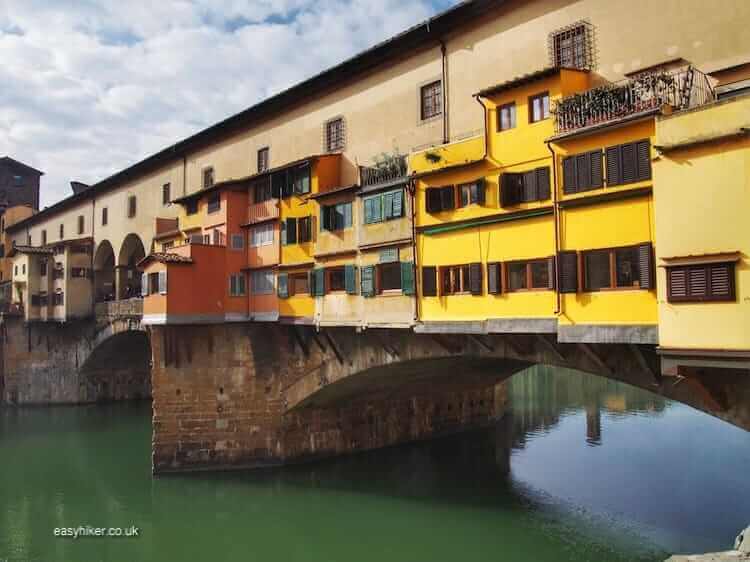
… which is nowadays firmly in the hands of the jewellery business. If you have come to Florence to buy an expensive watch, this is the place to go.
Continue down the river’s right bank, close to the old town. You will not have to wait long before noticing a change in scenery …
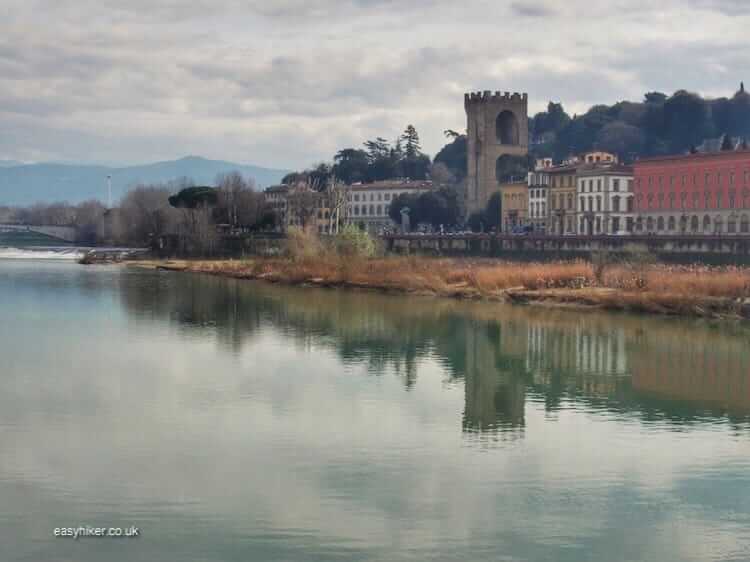
… and will be able to get some splendid views.
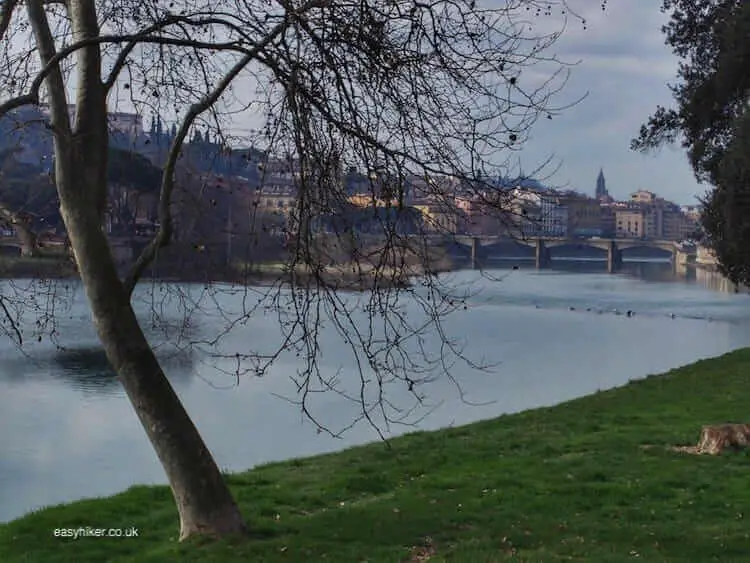
Overall, however, the landscape steadfastly refuses to take a turn towards the bucolic. Outside the town centre, the Arno is not at all what we had expected.
Instead, it is scruffy and – in places – surprisingly rough, as though it ran right through the middle of a council estate.
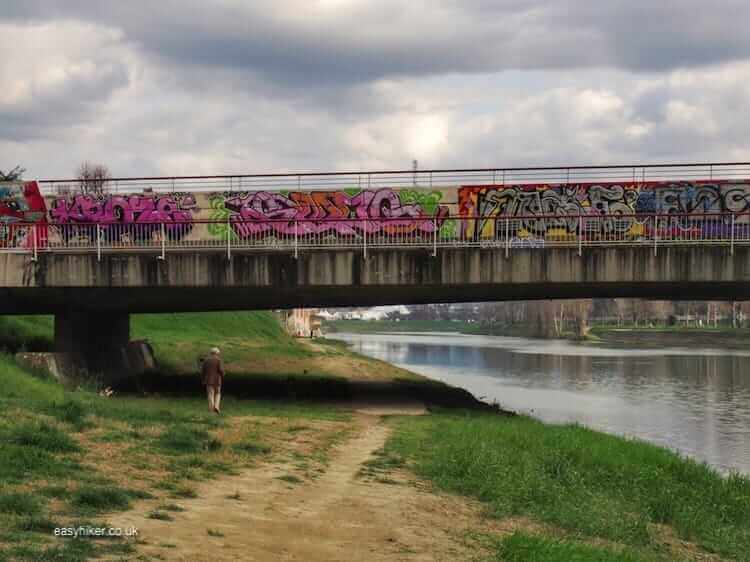
Outside the town centre, it appears, Florence can be decidedly non-genteel. This part of the city is quite clearly a working-class district, which reminds us that tourism is not the only show in town.
Florence, after all, is not Venice and has a total population of 1.5 million people (suburbs included) of which 500,000 are accounted for by the metropolis itself.
The streets to the east of the old town form just one of the quarters where all these people lead their lives: a ten-minute walk and a million miles away from the madding crowds of tourists and the glitz of the old town.
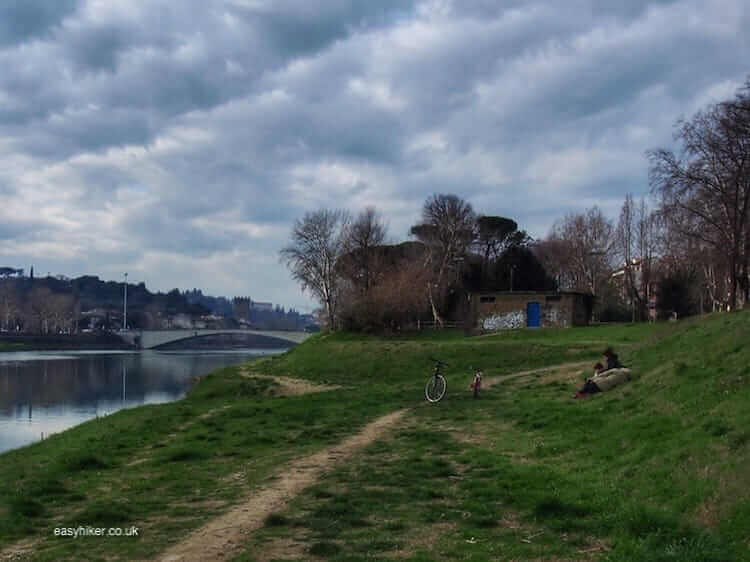
This is how it has always been in Florence. Even during the city’s “Golden Period” when Florence gave birth to banking and Renaissance art, most of its inhabitants had no direct connection to either and lived from the wool trade, much of which was conducted via the Arno.
Shipping on the Arno has, however, always been fraught with difficulties: the water rarely runs deep, and for many months, there is too little of it to make the Arno truly navigable – a problem of many rivers (and their landlocked towns) in central and southern Italy.
When the waters do come, however, the effect can be truly dramatic. Florence was subject to frequent floods in the Middle Ages, but the most recent flood in November 1966 was more devastating than all of these – and at least partly a man-made disaster.
Italian government institutions, in my observation, respond to all kinds of dangers and risks with the help of a two-key switchboard. One key sends out cheerful assurances that there is absolutely no cause for anxiety – “don’t worry, everything will be all right in the end” – and when that patently no longer works (when the excrement is about to hit the fan), they press the other key: the panic button.
The autumn of 1966 had brought a long period of continuous heavy rains to Tuscany, and in the early hours of November 4, the situation at several upstream dams had reached crisis point. At 4 a.m., the Valdarno dam looked about to burst, and to relieve this pressure, an enormous mass of water was deliberately discharged, all at once.
Just hours later, several metres of water stood in the Piazza del Duomo. At eight o’clock the same evening, the flood began to recede, but by then, the damage had already been done, and – because of the speed and the violence of the approaching tide – more than 600,000 tons of mud and rubble had been carried into the streets of historic Florence.
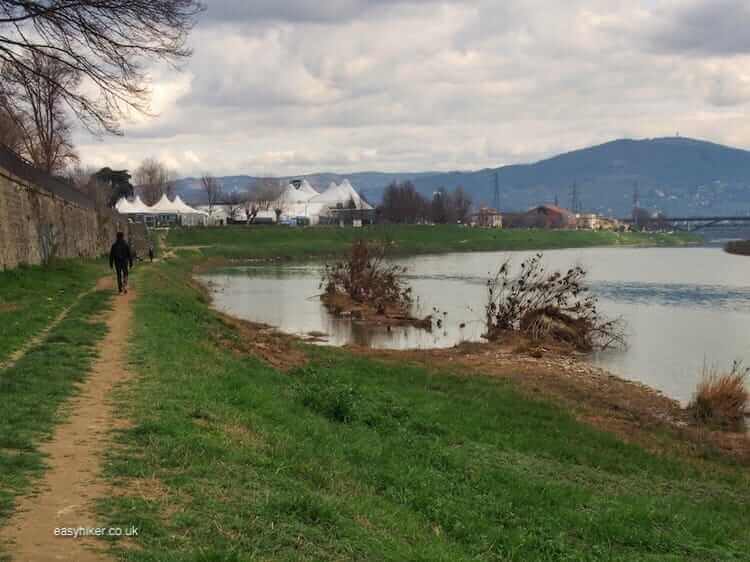
The flood would have come down this very stretch of the walk, approaching Florence at a tsunami-like speed of 60 km/h and catching citizens in their homes and in the streets totally by surprise. Which is why so many people died that night, over one hundred in some accounts.
If the present-day Arno is a bit too calm and peaceful for your taste: you can cut this walk short at any time. Just turn to the left anywhere between Tuscany Hall – a multi-purpose concert hall and exhibition venue – and the quarter of San Jacopo al Girone.
One block inland, you will find the main road, called Via Aretina Nuova, from where bus line no. 14 (which runs a frequent service throughout the day 7/7) can take you back to town.

